Key takeaways
- A musician’s portfolio should showcase their unique style and personal journey, incorporating influences from artists like John Mayer.
- Effective lyrics stem from emotional honesty and storytelling, allowing listeners to connect deeply through relatable themes.
- Imagery is crucial for enhancing the emotional impact of lyrics, creating lasting impressions that resonate with the audience.
- A structured writing process, including tapping into emotions and revising drafts, fosters vulnerability and powerful connections in songwriting.
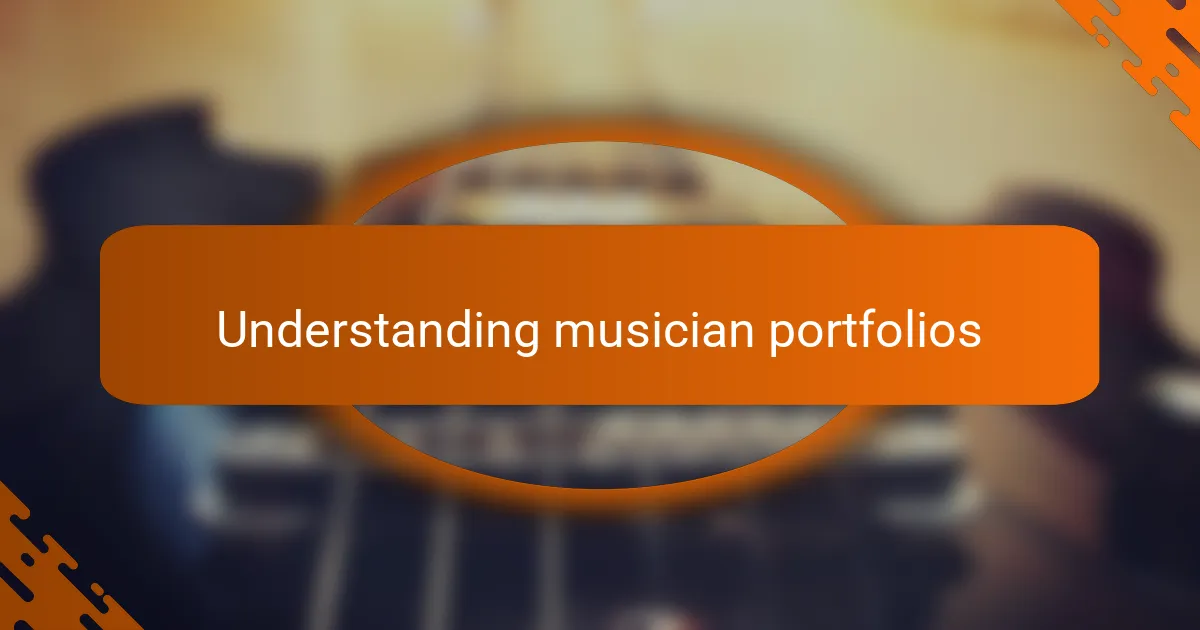
Understanding musician portfolios
Understanding a musician’s portfolio is essential for showcasing their unique style and talents. I’ve learned that a strong portfolio highlights not just the musician’s work, but also their creative journey. It’s a reflection of growth, experience, and personal expression, much like the deep, soulful lyrics of John Mayer that often narrate stories of love, introspection, and the human experience.
Crafting your portfolio with intention can help you connect with your audience. In my own journey, I’ve seen how each song represents a chapter of my life. Including lyrics inspired by artists like Mayer allows listeners to understand my influences and the emotions behind my music.
To make a comparison, here’s a concise table illustrating key elements to consider when building a musician portfolio inspired by John Mayer’s approach:
| Element | Example Inspired by John Mayer |
|---|---|
| Lyrics | Personal storytelling with emotional depth |
| Melody | Bluesy guitar riffs that evoke feelings |
| Performance Style | Intimate and authentic connection with the audience |
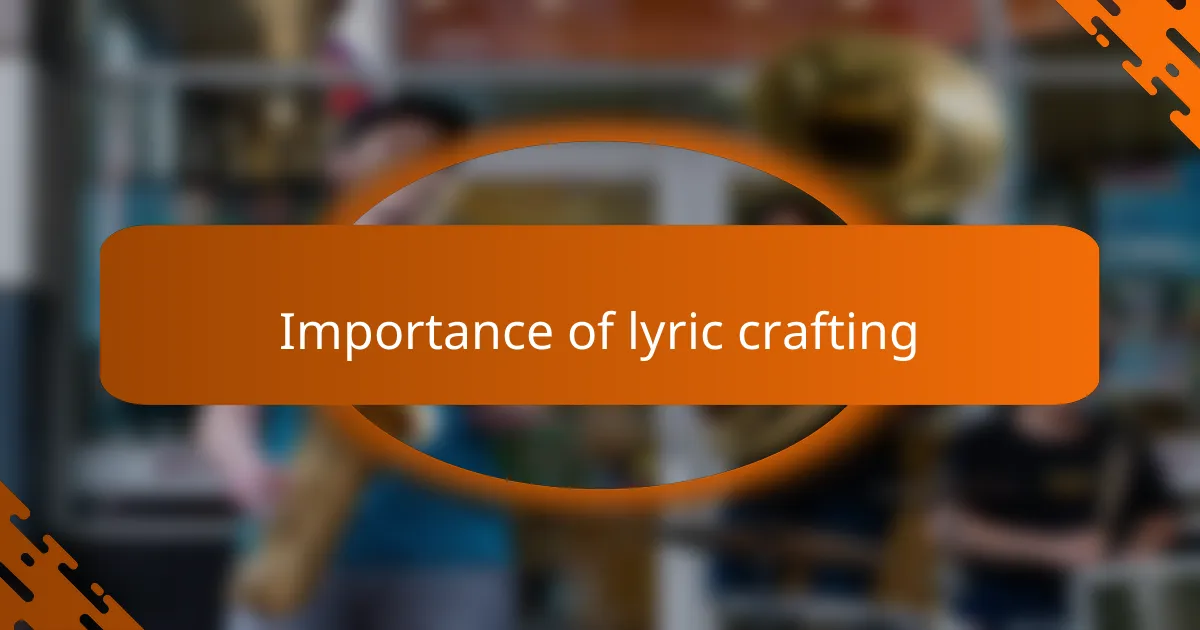
Importance of lyric crafting
Lyric crafting is crucial because it serves as a bridge between the artist and the listener. I often think about how each line creates an opportunity for connection; it invites listeners into a moment or memory. Songs become more than just notes; they transform into shared experiences that resonate deeply on an emotional level.
When I write lyrics, I draw inspiration from personal stories, just as John Mayer does. I recall a time when I penned a song about heartbreak, pouring my emotions onto the page. The resulting lyrics weren’t just confessions—they told a story that others could relate to, sparking conversations and reflections among my listeners. It’s this lyrical depth that fosters a sense of community.
Moreover, engaging lyrics spark curiosity and provoke thought. I’ve found that when I ask questions within my songs, like “What if love never fades?” it encourages listeners to reflect on their own lives. This aspect of lyric crafting not only keeps the audience engaged but also promotes a deeper understanding of both the music and themselves.
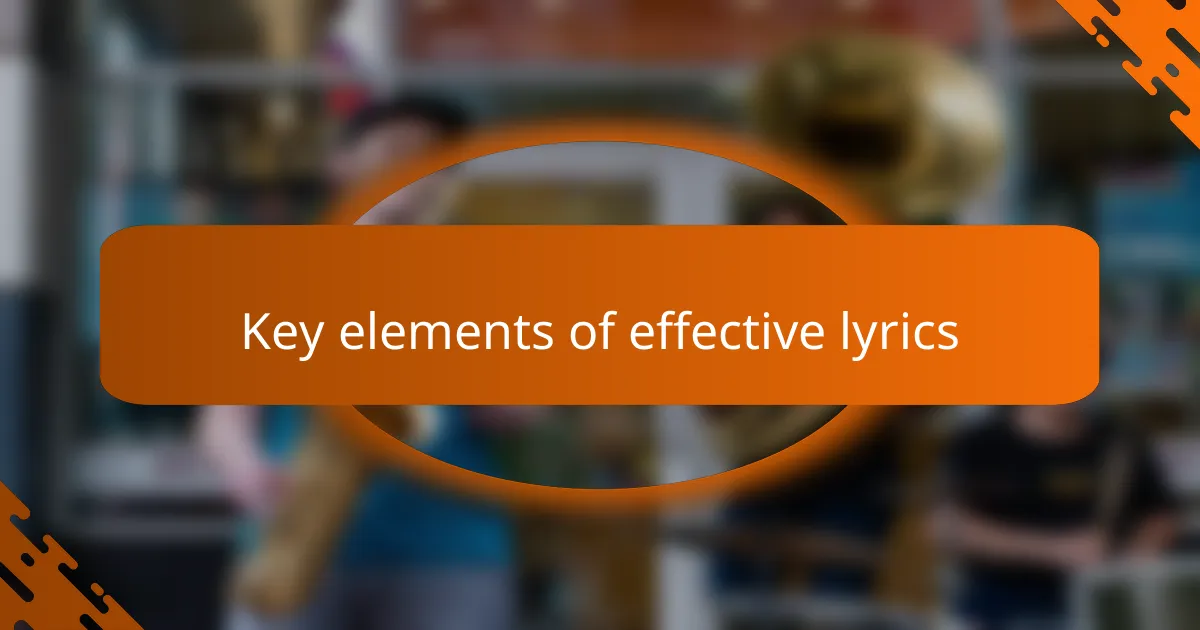
Key elements of effective lyrics
When crafting effective lyrics, I find that storytelling is paramount. John Mayer masterfully takes us on a journey through his songs, often weaving personal experiences with universal themes. I’ve learned that drawing from real-life moments not only resonates with listeners but allows them to see themselves in the narrative.
Emotional honesty is another key element I strive for in my lyrics. There’s something powerful about expressing vulnerability; it creates an intimate connection with the audience. For instance, I once wrote about a tough breakup, sharing my feelings raw and unfiltered. That honesty became the song’s foundation, helping it to resonate deeply with others who had faced similar heartaches.
Key Elements of Effective Lyrics:
– Storytelling: Create vivid narratives that engage listeners.
– Emotional Honesty: Be open about feelings to forge connections.
– Imagery: Use descriptive language to paint pictures in the listener’s mind.
– Relatable Themes: Address universal experiences, allowing listeners to connect personally.
– Melodic Structure: Ensure the cadence and rhythm complement the lyrical flow.
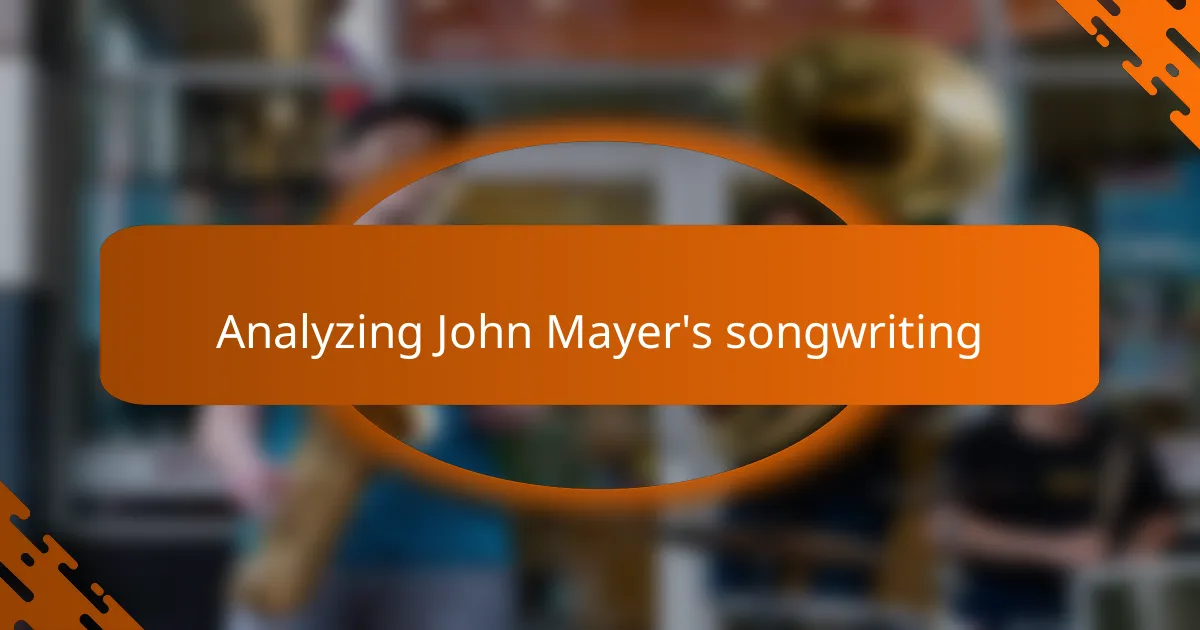
Analyzing John Mayer’s songwriting
John Mayer’s songwriting often stands out due to his remarkable storytelling ability. Each song feels like a glimpse into a moment of his life, which resonates deeply with listeners. I remember the first time I listened to “Slow Dancing in a Burning Room.” The vivid imagery paired with the emotional weight of the lyrics struck a chord within me, making me reflect on my own relationships. It’s this kind of relatable storytelling that invites listeners to engage with the music on a personal level.
Another defining feature of Mayer’s work is his skillful blend of emotional honesty with lyrical vulnerability. For instance, his approach to heartache is raw and authentic, offering insight into his struggles while allowing others to see their own experiences reflected in his words. I strive to emulate this in my own writing. When I poured out my thoughts in a song about longing, it felt cathartic to expose that side of myself. Do we often shy away from our vulnerabilities? Perhaps it’s in embracing them that we truly connect.
Mayer also masterfully utilizes imagery to enhance the emotional depth of his lyrics. His lines are often painted with simple yet striking visuals that create lasting impressions, like when he sings about “the cloud of smoke” enveloping a moment. This approach inspires me to consider how I can incorporate vivid descriptions into my own work. How can a single image evoke a flood of feelings? It’s clear that an impactful lyric can transcend mere words, inviting listeners into a more profound experience.
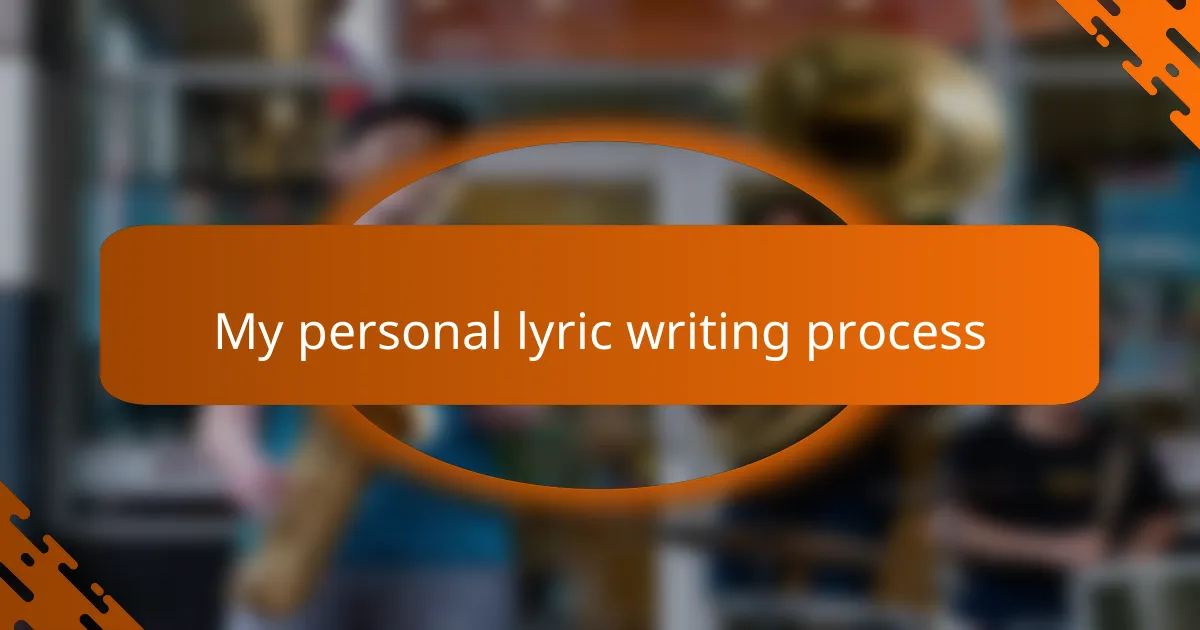
My personal lyric writing process
When I sit down to write lyrics, I often draw inspiration from my own experiences, much like John Mayer does in his storytelling. I remember a particularly rainy afternoon when I felt a mix of nostalgia and longing; that day shaped a song that focused on lost love and self-discovery. Channeling those emotions helps me create lyrics that resonate not just with me but with listeners too.
In crafting my lyrics, I follow a few key steps that I find particularly effective:
- Emotion First: I tap into my feelings to establish the core message.
- Storytelling: I visualize a narrative, almost like creating a scene in a movie, which gives the lyrics depth.
- Melodic Flow: I hum melodies to ensure the lyrics fit rhythmically and musically.
- Revisions: I’m not afraid to edit multiple drafts; lyrics should always feel fresh.
- Feedback Loop: I share with trusted friends to gain perspectives that can refine the piece.
Through this process, I’ve learned that vulnerability in songwriting can create powerful connections, something I’ve admired in Mayer’s work.
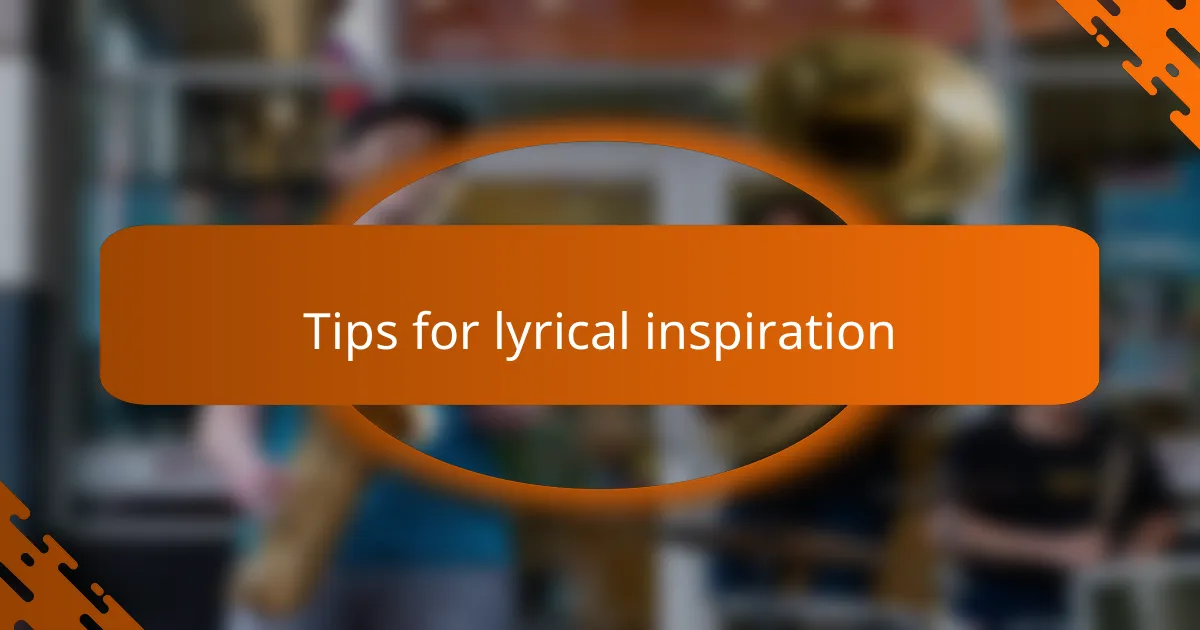
Tips for lyrical inspiration
When I’m looking for lyrical inspiration, I often reflect on personal experiences and emotions that resonate with me. Listening to John Mayer’s storytelling often encourages me to dig deep into my own memories, turning moments of heartbreak or joy into song. I remember a time when I jotted down lyrics while sitting on a park bench, feeling the weight of nostalgia wash over me.
To spark creativity in your lyrics, consider these tips:
- Stay true to your experiences: Reflect on moments that deeply affected you.
- Embrace storytelling: Structure your lyrics like a narrative; this draws listeners in.
- Experiment with imagery: Use vivid descriptions to paint scenes in the listener’s mind.
- Listen to diverse genres: This can inspire different lyrical styles and techniques.
- Write regularly: Mimic Mayer’s discipline by setting aside time each day to write.
- Collaborate with others: Share ideas to gain new perspectives and insights.
In my experience, each of these approaches can lead to powerful and relatable lyrics, reminiscent of the heartfelt style that Mayer perfected.